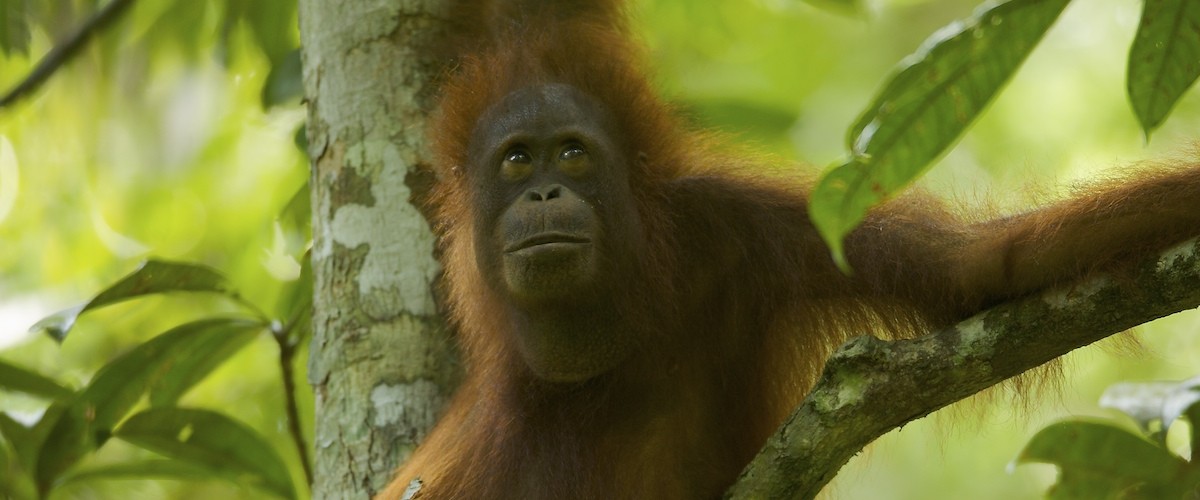By Dr. Alys Granados, PhD, GPOCP Research Manager
A massive fruiting event is currently underway at Gunung Palung National Park. Gunung Palung is dominated by dipterocarp trees which only produce fruit every 2-10 years. At Cabang Panti, flowering began in August with peak fruiting through November and December. These massive fruiting episodes are known as masting events and are characterized as being short in duration (peak fruiting is around 6 weeks), irregular and unpredictable in occurrence, and by the hyper-abundance of fruit produced. In other words, trees make a LOT of fruit over a short period of time every few years. Dipterocarp fruits may not look very appetizing as they lack any real pulp, but they are packed with nutrients sought after by a range of animals.
 |
|
Dipterocarp fruits have wings that aid in seed dispersal. Photo by Dr. Alys Granados
|
The unpredictable nature of these masting events makes them difficult to study and there is a lot we still don’t know about how animals in the rainforest are affected. Research suggests that masting is important to many animals and that for some, the increased quantity of food may facilitate increased reproduction.
Much of what we know comes from previous work in Gunung Palung by Dr. Lisa Curran and Dr. Mark Leighton. They found that a number of animals shifted their movement patterns to track dipterocarp fruiting trees. Some species, like bearded pigs (a species of conservation concern) also seem to time their reproduction to coincide with the peak in dipterocarpfruiting. Dr. Curran and Dr. Leighton’s work highlights the importance of these trees for a number of threatened species that live in the rainforests of Southeast Asia. However, forests in Borneo are under threat from human activity such as selective logging, where reproductive dipterocarp trees are targeted for removal, leading to reduced masting intensity. My own research in Malaysian Borneo suggests that animals like bearded pigs show weaker responses to masting in logged forests compared to those in unlogged forest, even at sites were fruit production is comparable. In unlogged forests, the number of bearded piglets detected by our camera traps showed a sharp increase, whereas there was little difference in the occurrence of piglets seen between mast and non-mast years in logged forest.
 |
|
Walimah eating Tetramistera fruit. Photo by Erin Kane.
|
Mast fruiting also gives us insights into the special adaptations orangutans have. Our project director, Dr. Cheryl Knott, has shown that orangutans take advantage of these periods of fruit abundance by eating huge amounts of fruit, including dipterocarpseeds, leading to a massive increase in their calorie intake. They are then able to put on significant fat stores that sustain them through the periods of low food availability that often follow the mast fruiting. Dr. Knott has also shown that during the masts female orangutan hormonal levels increase and they are more likely to get pregnant.
I feel incredibly lucky to be here during a mast fruiting and to witness first-hand how the orangutans, and other wildlife, respond to this fruit bonanza. We still have so much more to learn about this fabulous, but threatened, ecosystem.






